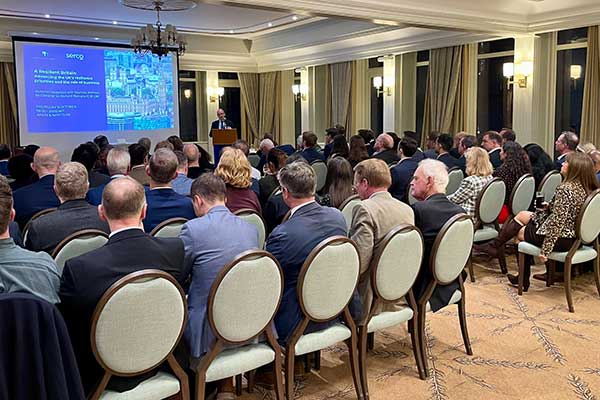The failure of two major generators almost simultaneously saw the temporary loss of 5% of national electrical output, resulting in over 1m homes losing power over disparate parts of the country, disruption of parts of the road and rail networks, and a hospital (Ipswich) affected when its reserve generator also failed.
While National Grid described the incident as ‘rare and unusual’, a similar incident of two generating units failing at about the same time occurred in 2008. Since then, there have reportedly been three ‘near misses’ when the stability of the power system came under stress. Clearly, the resilience of the grid is finely balanced. The implications of even a temporary failure are severe. What would a wider and more protracted outage look like?
The cascading effects of a massive power outage on other infrastructures – water, sewage, road/rail/air, manufacturing, etc – could lead to major national disruption and potential loss of life. Such an event is referred to as a ‘Black Sky’ event.
Black Sky hazards could occur in a variety of ways. There is the prospect of an electro-magnetic pulse (EMP) from a nuclear blast, a cyberattack, a malicious physical damage, an earthquake, severe space or terrestrial weather. Causes for concern abound: North Korea’s nuclear programme includes the idea of an EMP attack; a Russian cyberattack on Ukraine in 2015 knocked out much of the power grid there for hours; a massive solar storm narrowly missed the Earth in 2012 which, had it hit, would have caused economic losses estimated to be about $2tr; while Hurricane Maria caused a power-supply disaster lasting months in Puerto Rico in 2017.
Best estimates in the UK suggest that a Black Sky event, requiring a ‘Black Start’ (the term used for restarting the grid from a total power down) would require up to seven days before parts of the country saw power return. This is because power can only be restored in a sequential process if the system isn’t to be overloaded and fall over prematurely. However, the sequence is dependent on technical routing and switching, and not necessarily based on the priority of demand. London, although the seat of national government, is not currently the top priority area. Furthermore, it is not possible to identify single sites like major hospitals or water-pumping stations which must rely on their own reserve generators (often diesel powered). It also means that while response plans assume that other organisations, including the military, will be functioning as normal then it may well not be the case. No doubt, this issue of prioritisation will be a focus of attention in the government’s review of the latest power outage.
In a seminar in February, Lord Harris or Haringey concluded that:
• No service or utility can plan for a Black Sky event on its own.
• Every sector has to recognise its mutual dependencies on other sectors.
• A lot of work is needed to understand, predict and manage public behaviour under extreme, Black Sky circumstances.
• There is a general problem of situational awareness. “In a UK Black Sky scenario, it will be hard both for any individual organisation and for government to have a clear view on what is happening around the country.”
For further reading, please visit our Knowledge Hub.



